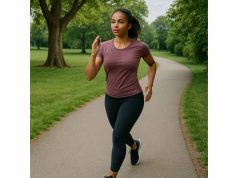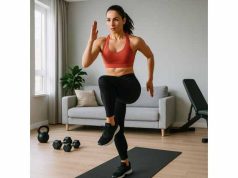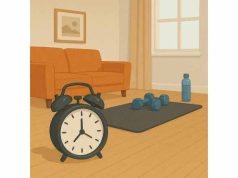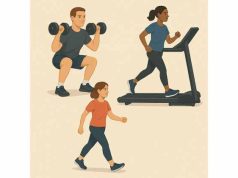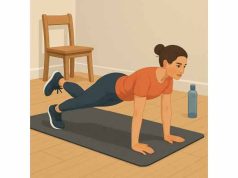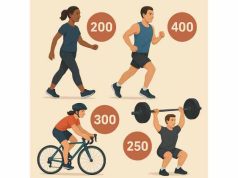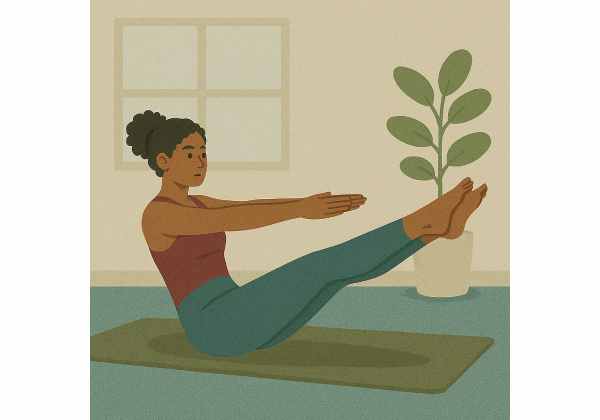
Pilates builds strength, control, and alignment—but can it help you lose weight? The short answer: yes, when it’s programmed with intention and paired with a consistent calorie deficit. Pilates raises daily energy expenditure, helps you keep lean muscle, and improves movement quality so you can train more often with less joint stress. It also reduces perceived stress, which can curb “all-or-nothing” dieting spirals. If you’re deciding how Pilates fits alongside walking, cardio, and strength work, start with this guide and see how it integrates with your broader plan for exercise planning for fat loss. Below you’ll find a practical 4-week beginner program, progressions for 6–12 weeks, and troubleshooting tips so Pilates becomes a reliable part of your weight-loss toolkit.
Table of Contents
- Does Pilates help weight loss?
- How Pilates burns calories
- Body composition and metabolism
- Beginner Pilates program (4 weeks)
- Progressions and intensity (6–12 weeks)
- Mistakes and troubleshooting
- Safety and who should avoid
- Frequently Asked Questions
Does Pilates help weight loss?
Pilates can support fat loss when two conditions are met: you’re in a steady calorie deficit over time, and your weekly activity is consistent. Pilates contributes on both fronts—by burning calories directly and by making it easier to sustain other training. While it’s not the single highest-burn modality, its joint-friendly nature means you can do it often and recover well, which matters more than any one “mega-burn” day.
Think of Pilates as a multiplier: it strengthens the midline, improves breathing mechanics, and teaches you to control ranges that running or lifting expose. This multiplies your capacity to walk more, lift more, and sit less without flaring up knees, hips, or your lower back. Over weeks, that reliability compounds into more total movement and, therefore, more energy out.
Where Pilates shines for weight loss:
- Adherence: Low impact and modifiable. You can train 3–6 days per week with minimal soreness.
- Movement economy: Better posture and control make walking, cycling, and strength sessions feel easier.
- Muscle retention: Time-under-tension holds and full-range patterns help keep lean mass during a deficit.
- Stress regulation: Breath-led sessions can reduce perceived stress and late-night snacking triggers.
Where it needs support:
- Calorie burn ceiling: A typical mat class burns less per minute than running or vigorous cycling. Pair with walking and 1–2 higher-intensity days if your schedule allows.
- Progressive overload: You still need progression—longer sets, denser flows, added resistance, or more challenging variations.
Anchor your approach in nutrition and safety. If you’re new to fat loss or have a medical condition, review the essentials of a safe weight-loss plan and speak with your clinician. Then use Pilates to make that plan maintainable.
Bottom line: Pilates helps weight loss when you treat it as a consistent, progressing program inside a bigger routine that includes steps, sensible nutrition, and recovery.
How Pilates burns calories
Calories burned in Pilates vary with body size, experience, and session style. A slow restorative mat sequence burns less than a continuous, flowing Reformer class with springs and standing work. The drivers of energy expenditure here are time under tension, range of motion, muscle mass recruited, and heart-rate demand.
Mechanics that increase expenditure
- Continuous flow: Link exercises with minimal rest. Transitions become “micro-sets” that keep heart rate up.
- Larger ranges: Within your control, move joints through fuller arcs to involve more muscle fibers.
- Unstable bases: Rings, balls, sliders, and Reformer springs require stabilizers to co-contract, boosting demand.
- Longer levers: Straight arms/legs and away-from-center positions increase torque and muscular work.
- Standing sequences: Add lunges, hinges, and balance challenges to recruit hips and legs, your big engines.
Session styles and relative burn
- Restorative/therapeutic mat (20–40 min): Lower total burn; useful for recovery days and adherence.
- Classical mat (30–45 min): Moderate burn; good base for 3–4 sessions weekly.
- Dynamic Reformer (40–55 min): Higher burn; springs, standing work, and short transitions raise heart rate.
To compare Pilates with other activities or estimate your own session, use our quick reference for calorie estimates by activity. Treat all charts as guides—the real lever is how consistently you stack modest burns across many days.
Practical ways to increase burn without losing form
- Shorten transitions: Pre-plan your next two moves; aim for 30–45 seconds between exercises.
- Layer tempo: Use 3–1–1 counts (three-second eccentric, one-second hold, one-second return) for sets of 45–75 seconds.
- Add resistance: Light dumbbells, bands, or Reformer springs for unilateral patterns and long-lever holds.
- Stand more: Insert mini-circuits of squats, hinges, and standing core every 8–10 minutes.
- Finish with a density block: 6–8 minutes repeating 3–4 movements at controlled speed.
Key idea: You don’t need a “sweat-fest.” You need repeatable sessions that challenge large muscle groups and keep you moving most days of the week.
Body composition and metabolism
Losing weight sustainably means keeping muscle while reducing fat. Pilates excels at this balance. Its hallmark is controlled, full-range movements that emphasize the trunk, hips, and shoulders—areas that stabilize every step you take and every weight you lift. During a calorie deficit, that stimulus helps maintain lean mass and the “tight coupling” between your brain and muscles, so you move more efficiently and avoid compensations that cause aches.
Why this matters for fat loss:
- Lean-mass retention: The more muscle you keep, the better your daily energy expenditure and shape changes.
- Posture and gait: Restoring ribcage-pelvis alignment makes walking and running feel easier, which encourages more movement.
- Breathing mechanics: Lateral ribcage expansion and diaphragmatic breathing improve bracing and reduce neck/low-back strain, allowing more total training.
Nutrition and recovery alignments
- Protein: Most adults cutting weight do well with a higher protein pattern spread across 3–4 meals. It helps satiety and muscle retention alongside Pilates.
- Sleep and stress: Daily 10–15 minutes of breath-guided mobility or a gentle mat flow can nudge down stress, which supports appetite regulation.
- Strength synergy: If you lift, Pilates improves positioning in squats, hinges, presses, and rows so you can load safely.
Core training isn’t “spot fat loss.” It’s about keeping strength where you need it while fat comes off system-wide. If you want a deeper dive on trunk work during a cut, see our guide to core strength during fat loss.
Takeaway: Pilates won’t supercharge metabolism on its own, but it protects the muscle and movement quality that make fat loss sustainable and your body look and feel better as the scale changes.
Beginner Pilates program (4 weeks)
This four-week plan builds a reliable habit and a base of control. It assumes you’re new to Pilates or returning after time off. Start with 3 sessions per week and optional “movement snacks” on off days. Keep breathing smooth, ribs stacked over pelvis, and ranges pain-free.
Weekly structure (Weeks 1–4)
- Session A (20–30 min): Cat-Cow → Dead Bug → Glute Bridge → Side-lying Leg Series → Roll-Down. 2–3 rounds; 45–60 second sets.
- Session B (25–35 min): Hundred (bent-knee) → Single-Leg Stretch → Swimming (gentle) → Mermaid → Wall Squat with reach. 2–3 rounds.
- Session C (25–35 min): Toe Taps → Heel Slides with band → Bird Dog → Clamshell → Standing Split-stance Balance. 2–3 rounds.
Progress in small, predictable steps
- Week 1: Learn positions and breath; stop sets when form degrades.
- Week 2: Add 10–15 seconds per set; shorten transitions.
- Week 3: Introduce one long-lever variation (e.g., straight legs on Hundred) and 1–2 light props.
- Week 4: Add a 6-minute density finisher: three moves repeated at controlled pace.
On non-Pilates days
- Walk 30–45 minutes or break into 2–3 short bouts. If you want help setting a target, see our primer on daily step goals.
- Optional: 1 short strength session (20–30 minutes) using squats/hinges/push/pull with light dumbbells.
Form cues that pay off
- Keep ribs down as you exhale; match breath to effort.
- Own “end-range lightness”—reach long without losing pelvic control.
- If your lower back grips, shorten the lever or reduce range.
Progressions and intensity (6–12 weeks)
Once you have control, you’ll lose fat faster by nudging workload upward while you guard recovery. Think in 3–4 week blocks with one simple dial at a time: density, range, or resistance.
Block ideas
- Weeks 5–8 (Density): Keep the same exercise list but compress rest. Insert a 6–8 minute EMOM-style core block (Every Minute On the Minute) with 30–40 seconds of controlled work.
- Weeks 9–12 (Range and Load): Progress to straight-leg versions, unilateral patterns, and more standing sequences. On Reformer, increase spring tension for controlled eccentrics.
Sample intermediate session (35–45 min)
- Hundred (straight-leg) → Roll-Up → Single-Leg Stretch → Side Plank with reach → Reformer Footwork (if available) → Long Stretch. Flow with brief transitions.
How to turn the dial safely
- Tempo: Use slow eccentrics (2–4 seconds down), brief isometrics, and crisp returns.
- Levers: Move hands/feet farther from the trunk only if you can keep the ribcage stacked.
- Props: Bands, rings, sliders, or light dumbbells create demand without joint pounding.
Weekly layout examples
- 3× Pilates + 2–3× walks: Most sustainable for busy schedules.
- 4× Pilates + 1–2× short cardio: If you enjoy classes, add brief intervals on bike/rower.
Build intensity, then back off one week out of every four. For guidance on balancing push and recovery inside a fat-loss phase, see our primer on smart rest days.
Mistakes and troubleshooting
Fat loss rewards consistency, not heroics. If results stall, scan for these common issues and the simplest fix that restores momentum.
Common mistakes
- Only restorative work: Great for recovery but too easy as your main plan. Add one dynamic session each week.
- No progression: Same order, reps, and ranges for months means fewer adaptation signals. Change one variable every 2–4 weeks.
- Too many “extras”: Random challenges, advanced inversions, or fatigue-driven reps cost next-day training quality.
- No steps baseline: Under 5,000 steps/day slows progress. Build a walking floor first.
- Under-recovery: Too little sleep or chronically tight diet raises injury risk and cravings.
- Vague tracking: You change three things at once and don’t know what worked.
Simple fixes
- Set a movement floor: Establish a daily steps range and 3 Pilates sessions per week. For easy ways to raise non-gym burn, review methods to boost non-exercise movement.
- Progress one dial: Add time, range, or light load—not all three.
- Check appetite levers: Lift protein, add fruits/veggies, and keep a consistent meal rhythm.
- Use brief assessments: Monthly photos, waist measure, and a 20-minute benchmark flow done at the same pace.
If pain spikes or fatigue lingers for more than 72 hours, reduce volume for a week and see the Safety section below.
Safety and who should avoid
Pilates is broadly safe and modifiable, but certain situations call for specific adjustments or medical clearance. When in doubt, scale range, slow tempo, and use more support.
Who should get clearance first
- Unresolved pain or recent injury/surgery: Especially spine, hip, knee, or shoulder.
- Osteoporosis/osteopenia: Avoid loaded, end-range spinal flexion and rapid twisting without professional guidance.
- Pregnancy: Many do well with Pilates, but avoid prolonged supine work after the first trimester and manage intra-abdominal pressure with a coach trained in prenatal modifications.
- Postpartum: Progress gradually; monitor for doming/dragging sensations along the midline and prioritize breath and pelvic-floor coordination.
- Hypermobility: Favor mid-range control, slower tempos, and more external feedback (walls/props).
- Cardiometabolic conditions: Start with shorter sessions; monitor symptoms and medication timing with your clinician.
Red flags—stop and seek care
- Sharp or radiating pain, new numbness/tingling, unusual shortness of breath, chest pain, or dizziness.
General safety cues
- Prioritize alignment: ribs over pelvis, neutral neck, smooth breath.
- Progress range only if you can maintain control at end ranges.
- Respect recovery: at least one lighter day each week; sleep 7–9 hours when possible.
Frequently Asked Questions
Can Pilates replace cardio for fat loss?
Pilates can anchor a fat-loss plan, but it’s best paired with walking or low-impact cardio. This combination raises weekly calorie burn without excessive joint stress. Two to four Pilates sessions plus regular steps and one short cardio day works well for most beginners.
How many Pilates sessions per week for weight loss?
Most people see progress with three sessions weekly, each 25–45 minutes, alongside a daily steps target. Add a fourth session if you’re recovering well and enjoy it. Prioritize consistency and gradual progression over marathon classes or sporadic high-effort weeks.
Is mat or Reformer better for weight loss?
Both work. Mat Pilates is accessible and builds control; Reformer adds adjustable resistance and standing work that can raise heart rate. Choose the option you’ll do consistently. If you have access to both, alternate to vary stimulus and maintain adherence.
How long until I see results from Pilates?
Expect noticeable changes in control and posture in 2–4 weeks with three sessions weekly. Visible fat loss depends on your calorie deficit and activity. Many see measurable changes in 6–12 weeks when Pilates is paired with steady walking and supportive nutrition.
Which Pilates moves are best for fat loss?
Focus on compound patterns that recruit large muscle groups: Hundred, Roll-Up, Side Plank variations, bridges, standing hinges, and Reformer footwork/long stretch. Flow them with short transitions for a steady heart-rate demand while maintaining precise form and breathing.
Will Pilates make me bulky?
No. Pilates builds muscular endurance and definition rather than high muscle mass. In a calorie deficit, it helps maintain lean tissue and shape without significant size increases. If you want more muscle, add progressive strength training with heavier loads outside Pilates sessions.
References
- Pilates for Overweight or Obesity: A Meta-Analysis – PMC 2021 (Systematic Review)
- Cardiorespiratory responses: Pilates compared to different walking speeds in healthy adults – PubMed 2024 (RCT)
- What is the exercise intensity of Pilates? An analysis of the energy expenditure, blood lactate, and intensity of apparatus and mat Pilates sessions – PubMed 2021
- Exercise in pregnancy – NHS 2023 (Guideline)
- Protecting Your Spine – Bone Health & Osteoporosis Foundation 2018 (Guideline)
Medical Disclaimer
The information in this article is educational and not a substitute for personalized medical advice. Exercise carries risks. If you have pain, a medical condition, or you’re pregnant or postpartum, consult a qualified healthcare professional before starting or changing your program.
Share and Stay Connected
If you found this useful, consider sharing it with a friend. You can also follow us on Facebook or X for new training guides and practical updates. We appreciate you reading and training with us.

